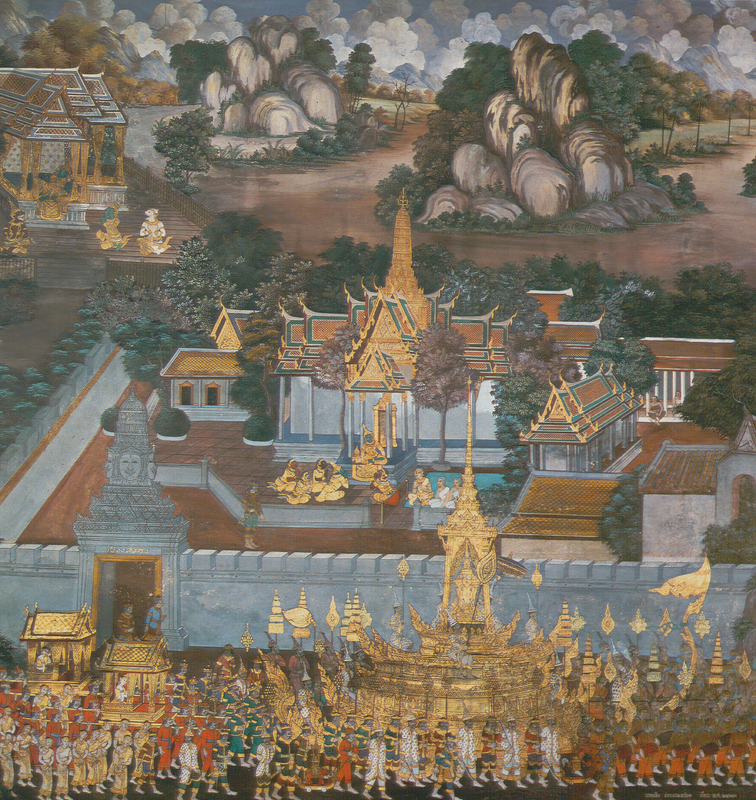Thailand
The Ramakien, as the Ramayana is known in Thailand, is the country's national epic. Though the story has been told for hundreds of years, the earliest versions have been lost, so the retelling by King Rama I is the one most commonly studied. Rama I changed his name to match that of the legendary hero when he ascended to the throne in 1782. To this day, Rama is an extremely popular name for South and Southeast Asian men.
Widespread affection for the Ramakien has led to incredible artwork. Below is a mural from the Wat Phra Kaew, or the Temple of the Emerald Buddha. The temple was constructed under the reign of Rama I, who wanted the sared twenty-six-inch jade figure of the Buddha to be surrounded by the great Hindu epic. This cultural blending was not unusual for the region, and even long after Rama I's passing, the murals have continued to be restored.
As for the story itself, the central goal of rescuing Sita from Ravana remains the same, but there are some deviations from the Valmiki. Like in the Mayalsian version, Hanuman is not celibate; the monkey has a child with Nang Supranamajcha, a half-woman, half-fish daughter of Ravana. The story of Sita's banishment near the end of the epic is also markedly different than the Valmiki Ramayana. While Valmiki explained that there was too much gossip about Sita's supposed infidelity for Rama to keep her in the palace, King Rama I writes that a rakshasa, bitter about Ravana's defeat, tricks Sita into drawing a picture of Ravana and leaving it under Rama's bed. This makes Rama believe that Sita misses Ravana.

Malaysia

